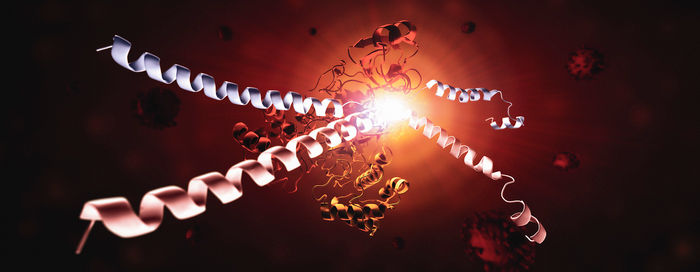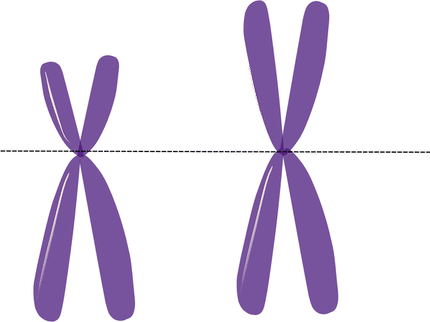Research into chromosome replication reveals details of heredity dynamics
A novel study from Karolinska Institutet has deepened the understanding of how chromosome replication, one of life’s most fundamental processes, works. In a long term perspective these results could eventually lead to novel cancer therapies. The study is presented in Nature.
By studying DNA replication in yeast cells, researchers at Karolinska Institutet have discovered that a protein complex (Smc5/6) helps to release torsional stress created in the DNA molecule when chromosomes are replicated in preparation for a coming cell division.
“Our study also indicates that the stress can propagate more freely along the DNA in a chromosome than was previously thought,” says KI professor Camilla Sjögren, head of the team that conducted the study.
The study therefore sheds more light on the mechanisms behind one of life’s most fundamental processes. Since topoisomerases, enzymes known to remove replication-related stress in the DNA are common targets for cancer treatments, the finding might eventually lead to new therapies.
When a fertilised egg develops into a complete organism, or when old cells are replaced by new ones, it is done through cell division. If human daughter cells are to survive and develop normally, they must each obtain a full set of 46 chromosomes, which are made of double-stranded DNA helices. Since the original mother cell started as a cell with 46 chromosomes, these must be duplicated before division take place.
During this process, the DNA double helix is separated so that the replication machinery can reach the individual DNA strands. This prising apart of the strands creates stress in the form of over-twisted DNA in the vicinity of the replication zone. If this stress is not removed, replication can be slowed down or even stopped, and this, in turn, can lead to mutagenesis and/or cell death.
“Several modern cancer treatments attack topoisomerases, but there’s a problem in that some cancers become resistant to such therapies,” says Professor Sjögren. “Now that we’ve discovered that also the Smc5/6 complex releases the stress which form during the replication process, our results might trigger the development of drugs that target Smc5/6. This could create another tool for inhibiting tumour growth.”
Original publication
Most read news
Other news from the department science

Get the life science industry in your inbox
By submitting this form you agree that LUMITOS AG will send you the newsletter(s) selected above by email. Your data will not be passed on to third parties. Your data will be stored and processed in accordance with our data protection regulations. LUMITOS may contact you by email for the purpose of advertising or market and opinion surveys. You can revoke your consent at any time without giving reasons to LUMITOS AG, Ernst-Augustin-Str. 2, 12489 Berlin, Germany or by e-mail at revoke@lumitos.com with effect for the future. In addition, each email contains a link to unsubscribe from the corresponding newsletter.
More news from our other portals
Last viewed contents
Jennerex Completes Patient Enrollment in Phase 1 Trial for Intravenous Administration of JX-594
Tecan concludes the sale of the Sample Management activities to NEXUS Biosystems
New Standards in Biotechnology
Valneva and BliNK Therapeutics Launch of New Biotech Company - New company has already secured first round of financing
Charles_Platt
Roche Diagnostics Licenses the Technology used for the LightCycler System to BIOTECON
Closing of public offering of Argos Therapeutics
Pakistan_Red_Crescent_Society
Human_Y-chromosome_DNA_haplogroups























































